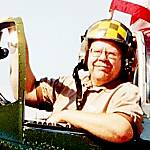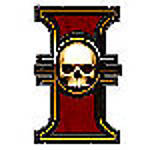|
Decals represent markings that are painted on aircraft.
For realism these markings need to look painted on. One option is to
actually paint them and this approach is relatively easy when simple
markings, such as Japanese Hinhomaru, or British or French roundels, are
required. But to try and paint stencilling, or nose art and the like would
defeat most modellers. There are, of course, ways around this but that
may
be the subject of another article. What I would like to address in this
piece is how I approach the application of the decalling process. I say,
“how I”, because we all have our own ways of doing the same thing. This is
aimed mainly at those who struggle a little with this important part of
modelling. I am certainly not declaring myself as any type of expert
(definition of an expert: ex, is something that doesn’t exist
anymore, s-pert, is a drip under pressure). I have had some
success, however, and would like to pass on what I have learned over many years of
attempting this process.
 |
What is a decal? |
A
decal is a design printed on a sheet of special (?) paper on top of
water-soluble glue. A clear coating (the carrier film) is applied over the
design to keep it all together. This clear coating can be over the entire
sheet or just over each design. Because of this make up, the decal has
a certain thickness that will be dealt with during the decalling process.
As you probably know, these decals come with the kit and can be of greatly
varying quality. There are also many aftermarket decal manufacturers
that are
mostly very good and offer the modeller a wide variety
of options to make his or her model unique. These many different decals will
react in a similar fashion to each other, using the techniques I will
describe, but some need a little more coaxing than others will. Just a word
of warning-some decal solutions are stronger than
others. I have heard of some decals being destroyed by the stronger
solutions. I personally have never had this problem but you
do need to be aware.
 |
What you will need. |
-
Shallow container for water. A saucer is
ideal.
-
Scissors.
-
Scalpel or hobby knife.
-
Steel Ruler.
-
Tweezers.
-
Setting solutions (I'm using Aero Set/Sol)
-
Brushes to apply the solutions (one for each
so there is no cross-contamination).
-
Folded paper towel.
-
Something to support the model. I use a
homemade stand but an empty box will do.
|
|
Project Photos


|
|
About the Author
About Mal Mayfield (Holdfast)
Hi, my name is Mal Mayfield and I have been modelling seriously for about 25 years. My main interest is 1/48 scale second world war. I build all types and all combatants. I have built 1/35 scale "targets" and 1/72 scale modern aircraft, plus a couple of cars. I have also dabbled with figure painting...
Copyright ©2021 by Mal Mayfield. Images also by copyright holder unless otherwise noted. The views and opinions expressed herein are solely the views and opinions of the authors and/or contributors to this Web site and do not necessarily represent the views and/or opinions of AeroScale, KitMaker Network, or Silver Star Enterrpises. Images also by copyright holder unless otherwise noted. Opinions expressed are those of the author(s) and not necessarily those of AeroScale. All rights reserved. Originally published on: 2004-02-01 00:00:00. Unique Reads: 15425













